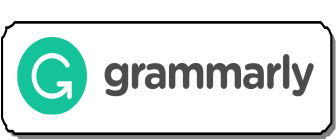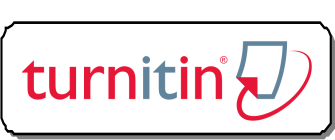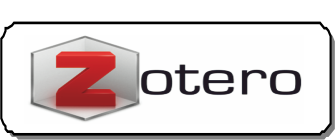Pendayagunaan Pusat Sumber Belajar (PSB) DI IAIN Samarinda
Abstract
Keberhasilan proses kegiatan belajar dan mengajar tidak hanya ditentukan oleh kualifikasi tenaga pengajar, melainkan semua komponen yang menjadi faktor pendidikan juga memiliki peranan penting. Selain kurikulum yang matang, tenaga pendidik yang kompeten, input peserta didik yang pilihan, dan sarana yang memadai, juga perlu adanya sumber belajar yang dapat dimanfaatkan demi tercapainya tujuan pendidikan sesuai dengan Standar Nasional Pendidikan.
Bagi kalangan pendidikan tinggi (perguruan tinggi) upaya untuk mengoptimalkan pengelolaan Pusat Sumber Belajar menjadi perhatian utama. Terlebih lagi adanya perpustakaan yang merupakan jantung lembaga pendidikan (perguruan tinggi), di samping sumber belajar lainnya. Demikian pula IAIN Samarinda yang menjadi icon Perguruan Tinggi Keagamaan Islam Negeri di provinsi Kalimantan Timur dan Kalimantan Utara juga mencanangkan program pendayagunaan Pusat Sumber Belajar yang dimilikinya.
Adapun Pusat Sumber Belajar (PSB) yang terdapat di IAIN Samarinda antara lain adalah perpustakaan, laboratorium komputer yang dikelola oleh Teknologi Informasi dan Pangkalan Data (TIPD), Pesantren Kampus (ma’had al-Jami’ah) dan Unit Pengembangan Bahasa. Upaya mendayagunakan Pusat Sumber Belajar (PSB) telah dimulai dari perencanaan, pelaksanaan, dan evaluasi. Hal ini termasuk pola penganggaran (dana), pengembangan program akademik (software dan hardware), manajerial SDM maupun administratifnya. Pendayagunaan PSB tersebut diselaraskan dengan akselerasi dan peningkatan status akreditasi baik lembaga (institusi) maupun program studi, serta pengembangan kurikulum untuk matakuliah yang bercirikan KKNI (Kerangka Kualifikasi Nasional Indonesia), bahkan untuk pembukaan Program Studi baru.References
Dawam, Ainurrafiq, dan Ahmad Ta’arifin, Manajemen Madrasah Berbasis Pesantren, Cet. 2, T. KP: Listafariska Putra, 2005.
Furqan, Arief, Pengantar Penelitian dalam Pendidikan, Surabaya: Usaha Nasional, 1982.
Guntur, Alex, Kerangka Pokok-Pokok Manajemen, Jakarta: Bharata, 1975.
Hadi Miarso, Yusuf, Menyemai Benih Teknologi Pendidikan, Jakarta: Pustekkom DIKNAS, 2005.
Hadi, Sutrisno, Metodologi Research, Yogyakarta: Fak. Psikologi UGM, 1985.
Hamalik, Oemar, Kurikulum dan Pembelajaran, Jakarta: Bumi Aksara, 2003.
_____________, Pengembangan Kurikulum Lembaga Pendidikan dan Pelatihan, Bandung: Trigenda Karya, 1993.
Iskandar dan Musraji, Pengelolaan Sumber Daya Pembelajaran, Surabaya: IKIP Press, 1996.
Isjoni, Pemanfaatan Teknologi Pengajaran: Harapan untuk Indonesia, dalam Pembelajaran Terkini Perpaduan Indonesia-Malaysia, cet. 2, editor Isjoni dan Firdaus LN, Yogyakarta: Pustaka Pelajar, 2008.
Lubis, Ibrahim, Pengendalian dan Pengawasan Proyek dalam Manajemen, Jakarta: Ghalia Indonesia, 1985.
Munadi, Yudhi, Media Pembelajaran; Sebuah Pendekatan Baru, Jakarta: Gaung Persada Press, 2008.
Munir, Kurikulum Berbasis Teknologi Informasi dan Komunukasi, Bandung: Alfabeta, 2008.
Percival, Fred, Henry Ellington, Teknologi Pendidikan, alih bahasa Soedjarwo, Jakarta: Erlangga, 1988.
Rusyan, A. Tabrani, et. al, Upaya Pembaharuan dalam Pendidikan dan Pengajaran, Bandung: Remaja Rosda Karya, 1988.
Sanjaya, Wina, Kurikulum dan Pembelajaran, Cet. 2, Jakarta: Kencana, 2009.
Slameto, Belajar dan Faktor-Faktor yang Mempengaruhinya, Jakarta: Rineka Cipta, 1995.
Sudirman, Ilmu Pendidikan, Bandung: Remaja Rosda Karya, 1987.
Sudjana, Nana dan Ahmad Rivai, Teknologi Pengajaran, cet. V, Bandung: Sinar Baru Algesindo, 2007.
Syaodih Sukmadinata, Nana, Pengembangan Kurikulum, Teori dan Praktek, Bandung: Rosda Karya, 2004.
Syukur, Fatah, Teknologi Pendidikan, Semarang: RaSAIL Walisongo Press, 2005.
Tantowi, Jawahir, Unsur-Unsur Manajemen Menurut Al-Qur’an, Jakarta: Pustaka al-Husna, 1983.
Terry, George R., Principles of Management, New York: R.D. Irwin Inc, 1966.
Jurnal
Ibrahim, Sumber Belajar, Jurnal Pendidikan, IKIP Malang, 1994, 65.
Sunarto, Macam dan Metode Analisa Data Penelitian Deskriptif, dalam Jurnal Penelitian BIMASUCI Nomor IV Tahun 1996.
Undang-Undang
Undang-undang Nomor 20 Tahun 2003 tentang Sistem Pendidikan Nasional
Peraturan Pemerintah (PP) Nomor 19 Tahun 2005 tentang Standar Nasional Pendidikan
Website:
http://ern.pendis.depag.go.id/cfm/index.cfm?fuseaction
Please find the rights and licenses in SYAMIL Jurnal Pendidikan Agama Islam (Journal of Islamic Education). By submitting the article/manuscript of the article, the author(s) agree with this policy. No specific document sign-off is required.
1. License
The non-commercial use of the article will be governed by the Creative Commons Attribution license as currently displayed on Creative Commons Attribution-ShareAlike 4.0 International License.
2. Author(s)' Warranties
The author warrants that the article is original, written by stated author(s), has not been published before, contains no unlawful statements, does not infringe the rights of others, is subject to copyright that is vested exclusively in the author and free of any third party rights, and that any necessary written permissions to quote from other sources have been obtained by the author(s).
3. User/Public Rights
SYAMIL spirit is to disseminate articles published are as free as possible. Under the Creative Commons license, SYAMIL permits users to copy, distribute, display, and perform the work for non-commercial purposes only. Users will also need to attribute authors and Register on distributing works in the journal and other media of publications. Unless otherwise stated, the authors are public entities as soon as their articles got published.
4. Rights of Authors
Authors retain all their rights to the published works, such as (but not limited to) the following rights;
Copyright and other proprietary rights relating to the article, such as patent rights,
The right to use the substance of the article in own future works, including lectures and books,
The right to reproduce the article for own purposes,
The right to self-archive the article (please read out deposit policy),
The right to enter into separate, additional contractual arrangements for the non-exclusive distribution of the article's published version (e.g., post it to an institutional repository or publish it in a book), with an acknowledgment of its initial publication in this journal (SYAMIL Jurnal Pendidikan Agama Islam (Journal of Islamic Education)).
5. Co-Authorship
If the article was jointly prepared by more than one author, any authors submitting the manuscript warrants that he/she has been authorized by all co-authors to be agreed on this copyright and license notice (agreement) on their behalf, and agrees to inform his/her co-authors of the terms of this policy. SYAMIL will not be held liable for anything that may arise due to the author(s) internal dispute. SYAMIL will only communicate with the corresponding author.
6. Royalties
Being an open accessed journal and disseminating articles for free under the Creative Commons license term mentioned, author(s) aware that SYAMIL entitles the author(s) to no royalties or other fees.
7. Miscellaneous
SYAMIL will publish the article (or have it published) in the journal if the article’s editorial process is successfully completed. SYAMIL editors may modify the article to a style of punctuation, spelling, capitalization, referencing and usage that deems appropriate. The author acknowledges that the article may be published so that it will be publicly accessible and such access will be free of charge for the readers as mentioned in point 3.












